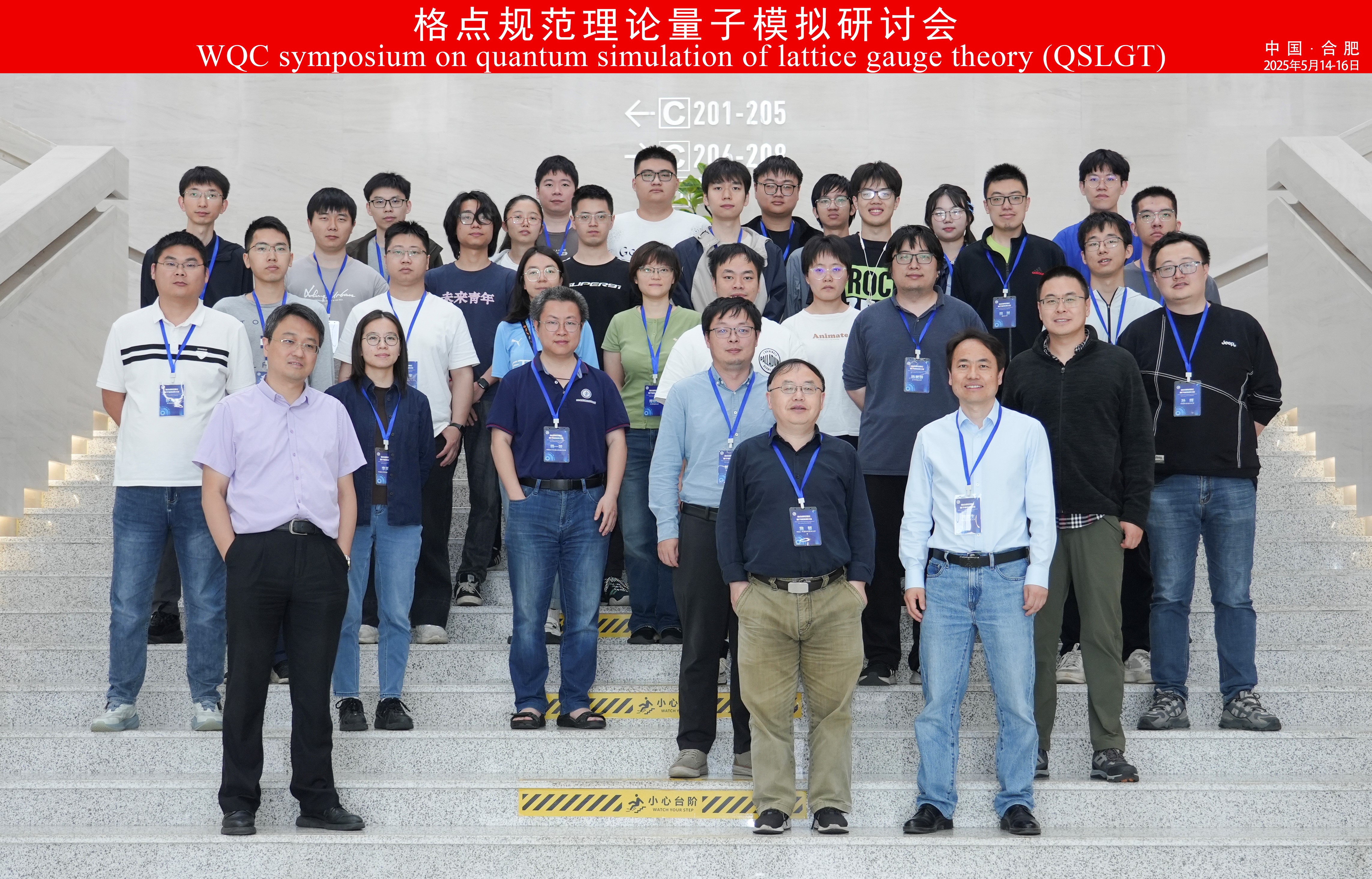From May 14 to 16, 2025, the "WQC Symposium on Quantum Simulation of Lattice Gauge Theory (QSLGT)" was convened at the Hefei National Laboratory, jointly hosted by the Hefei National Laboratory, and the Wilczek Quantum Center (WQC) at SIAS-USTC. The symposium centered on leveraging quantum simulation to address fundamental challenges in lattice gauge theory, with a focus on overcoming computational bottlenecks and fostering cross-disciplinary innovation.
On May 15, the opening session was co-chaired by Professor Yuan Zhensheng (USTC) and Professor Shi Yu (WQC), who underscored quantum simulation as a transformative tool for addressing challenges like strong coupling and sign problems in lattice gauge theory.
The symposium spotlighted cutting-edge topics: Shi Yu addressed researches on digital quantum simulation of Z2 lattice gauge theory; Yang Yibo (Institute of Theoretical Physics, CAS) dissected current challenges in classical simulations; Yuan Zhensheng presented breakthroughs in cold-atom quantum simulations; and Li Yingying (Institute of High Energy Physics, CAS) highlighted advancements in non-Abelian gauge theories. Li Tianyin (South China Normal University) analyzed quantum electrodynamics under the Coulomb gauge, while Cheng Yanting (University of Science and Technology Beijing) reimagined the Schwinger model through a supersymmetric lens. Zhai Yun (Tsinghua University) introduced his work on Kibble-Zurek Scaling as a Probe of Criticality. Additionally, experimental studies on lattice QCD under extreme conditions by Si Fan and Shu Haitao (ECUN) offered critical empirical validation for theoretical frameworks.
Experts from over a dozen institutions, including USTC, Fudan University, Tsinghua University, and Peking University, underscored the symposium’s academic significance. In closing remarks, Professors Yuan Zhensheng and Shi Yu summarized the field’s progress and future trajectories, and emphasized that merging quantum simulation with lattice gauge theory will expedite solutions to core challenges in particle physics and condensed matter, while unlocking novel quantum computing applications. They announced plans to host regular follow-up symposia to sustain academic exchange and urged continued global participation.
Through rigorous discussions and collaborative exchanges, the symposium solidified cross-disciplinary partnerships and charted future research priorities. Organizers pledged to leverage the Hefei National Laboratory’s resources to deepen quantum-tech integration with theoretical physics, advancing China’s leadership in cutting-edge scientific frontiers.
